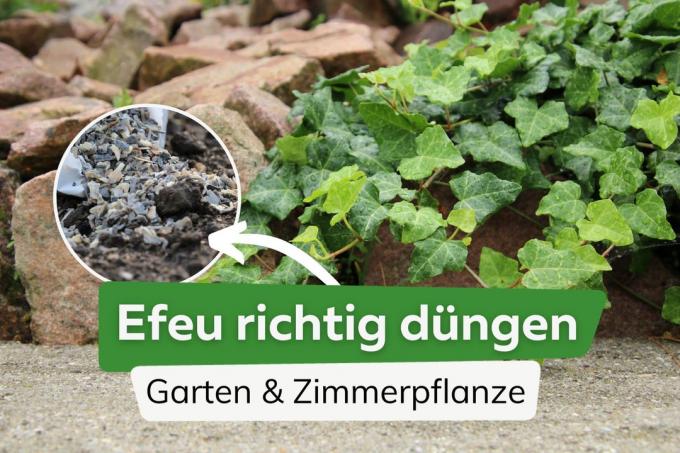
Ivy is a robust and easy-care climbing and climbing plant. Nevertheless, it also requires a certain amount of care in the garden and when kept indoors. a. in the form of regular fertilizer applications.
To the point
- Fertilize in the garden depending on the location
- as a houseplant regularly
- Prefer organic fertilizers
- Fertilize houseplants more often
Table of contents
- Basics of ivy fertilization
- Fertilize ivy in the garden
- Suitable organic fertilizers
- Chemically fertilize ivy
- Fertilize indoor ivy
- frequently asked Questions
Basics of ivy fertilization
ivy (Hedera helix) can adapt well to different soil conditions. And this is exactly what plays an important role in the supply of nutrients. It is advisable to first carry out a soil analysis to determine the actual nutrient content of the soil and the pH value. This is particularly about a balanced ratio between the main nutrients nitrogen, phosphorus and potassium. Actual nutrient requirements and frequency of fertilization vary depending on the form of cultivation, i.e. whether it is in the garden or cultivated as a houseplant becomes.

Fertilize ivy in the garden
If ivy is in a favorable, shady and moist location in the garden without waterlogging, it usually doesn't need to be fertilized at all. In some cases, fertilizing can still make sense.
- for better growth and faster spread
- Fertilization once per year is usually sufficient
- The right time is between mid-March and the end of July
- do not fertilize later
- not even with new planting
- and do not fertilize for six to eight weeks afterwards
- and immediately after repotting
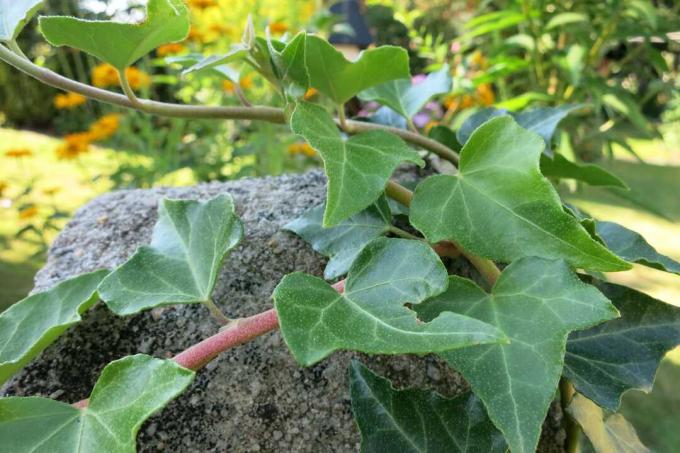
It is advisable to fertilize only in overcast weather and not in sunshine to avoid burning the leaves. And don’t forget to water after fertilizing!
Suitable organic fertilizers
Damn
Various organic fertilizers are available for fertilizing, which should generally be preferred over chemical fertilizers. One of these fertilizers is manure or Horse or cow manure, good sources of nitrogen and phosphates and also rich in organic matter. This natural fertilizer promotes a crumbly soil structure, the activity of microorganisms and the formation of humus. However, the manure should always be well seasoned or composted for at least a year. Fresh manure is unsuitable as it would burn the roots.
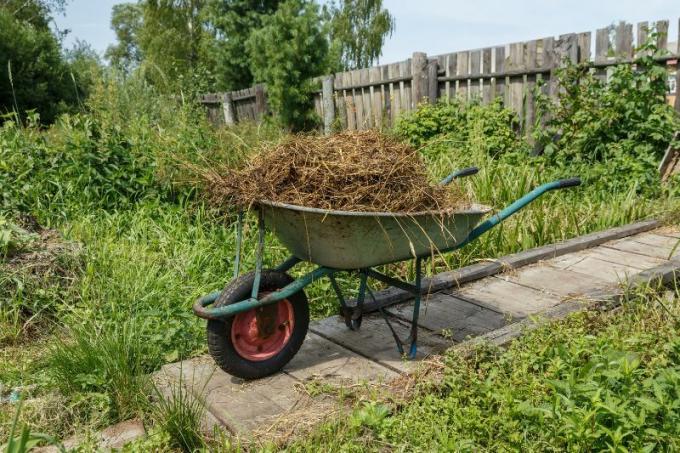
Horse manure rots faster than cow manure. However, manure can contain germinable weed seeds.
Compost and horn shavings
Compost is the classic organic fertilizer. It has all the important nutrients and also helps to improve the structure and water-holding capacity of the soil. Horn shavings, horn semolina or horn meal have a high nitrogen content and are ideal long-term fertilizers. So how do you go about it?

- thin Layer of compost Distribute evenly over the root area
- Work lightly into the soil
- Same procedure for horn shavings
- Decomposition process here takes several months
- Grain is crucial
- fastest effect on horn meal and horn semolina
If the soil is to be mulched, it is advisable to apply horn shavings beforehand to avoid a nitrogen deficiency Bark mulch to counteract.
coffee grounds
A home remedy for fertilizing ivy is coffee grounds. It also contains nitrogen, phosphorus and potassium, which the plants are well supplied with. You let it dry first and then spread it over the root area. Then you rake it lightly into the ground and then water. The amount of a filter bag filled with coffee grounds can fertilize around 10-20 liters of soil.
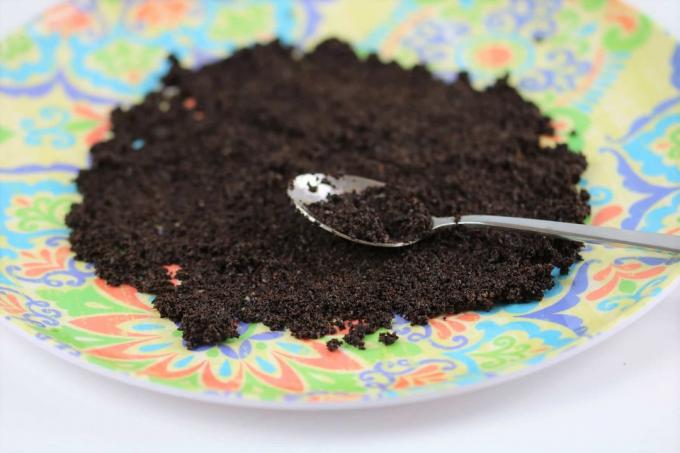
green manure
A special form of fertilization is this green manure. Special plants are grown that enrich the soil with nutrients and also improve soil fertility and counteract soil erosion. Green manure plants such as b. Clover, Lupins, yellow mustard and alfalfa are best planted at regular intervals between the ivy plants. As soon as they are ripe or are fully developed, they are simply undermined.
Chemically fertilize ivy
liquid fertilizer
- easy to use, quick results
- Nutrients immediately available to plants
- Commercial shrub or hedge fertilizer for ivy
- alternatively long-term conifer fertilizer
- supplies ivy with important nutrients in the year after planting
- Apply liquid fertilizer during the main growth phase
- from spring to autumn
- according to the manufacturer's quantities
Blue Grain
- purely mineral fertilizer, complex or complete fertilizer
- with main nutrients nitrogen, phosphorus and potassium
- administer in spring
- always use sparingly
- Spread over around ten percent of the area to be fertilized
- No training required
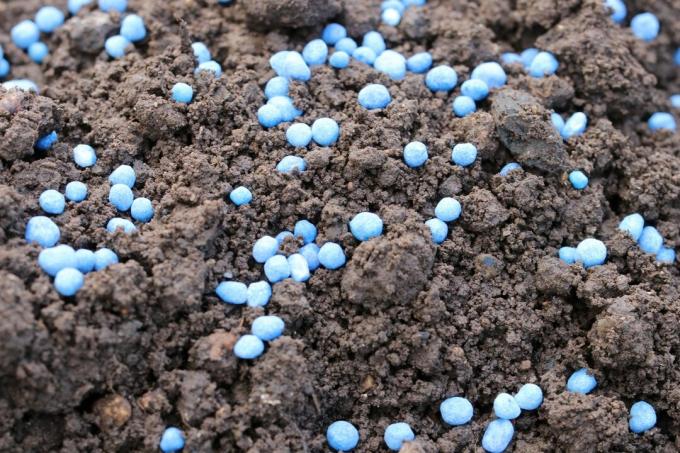
Even if Blue Grain works quickly, it does not build humus, is not beneficial for soil life and the risk of over-fertilization is present at any time. In addition, excess nutrients can be washed out into the groundwater.
Fertilize indoor ivy
In general, ivy feels much more comfortable when planted in the garden than when kept indoors. Nevertheless, culture in a pot is fundamentally possible. However, there are clear differences in fertilization, particularly due to the smaller amount of substrate or the smaller volume in the pot.
- Fertilize regularly from March to August
- about every two weeks
- with commercially available liquid fertilizer
- preferably administered via irrigation water
- Follow the dosage instructions on the fertilizer package
- Do not fertilize during the dormant period in winter
- at least six to eight weeks
- Pause with fertilization after repotting
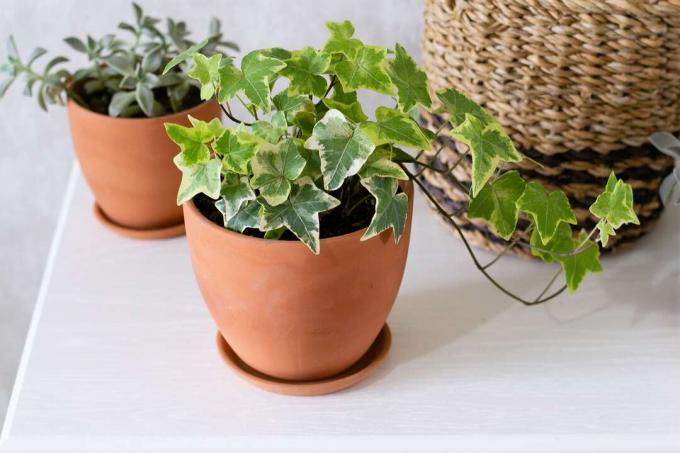
Regular repotting is also part of ensuring an optimal supply of nutrients. Since ivy forms a dense and strong root system, annual repotting is recommended. You can then avoid fertilizing for several weeks. After two to three years at the latest, ivy must be moved to a larger container.
Specimens in pots that overwinter outside, for example on the balcony or on the house wall, should also be fertilized regularly. Dosage and frequency of fertilizer application corresponds to that of houseplants.
frequently asked Questions
Cold coffee and not coffee grounds are more suitable for houseplants. It is best to dilute it 1:1 with water and water the ivy once a week. Coffee grounds are difficult to decompose on potted plants, which is why they are easier to use in brewed form for the plants.
Suitable for this are: a. Varieties with variegated leaves such as Algerian ivy, golden-leaved 'Golden Hummingbird' and Hedera helix 'Eva'. The green common ivy (Hedera helix) is suitable for dark corners.
As a rule, this is not due to fertilization, as ivy only blooms for the first time after ten years at the earliest. Until then, this is what matters most Tendril growth.

